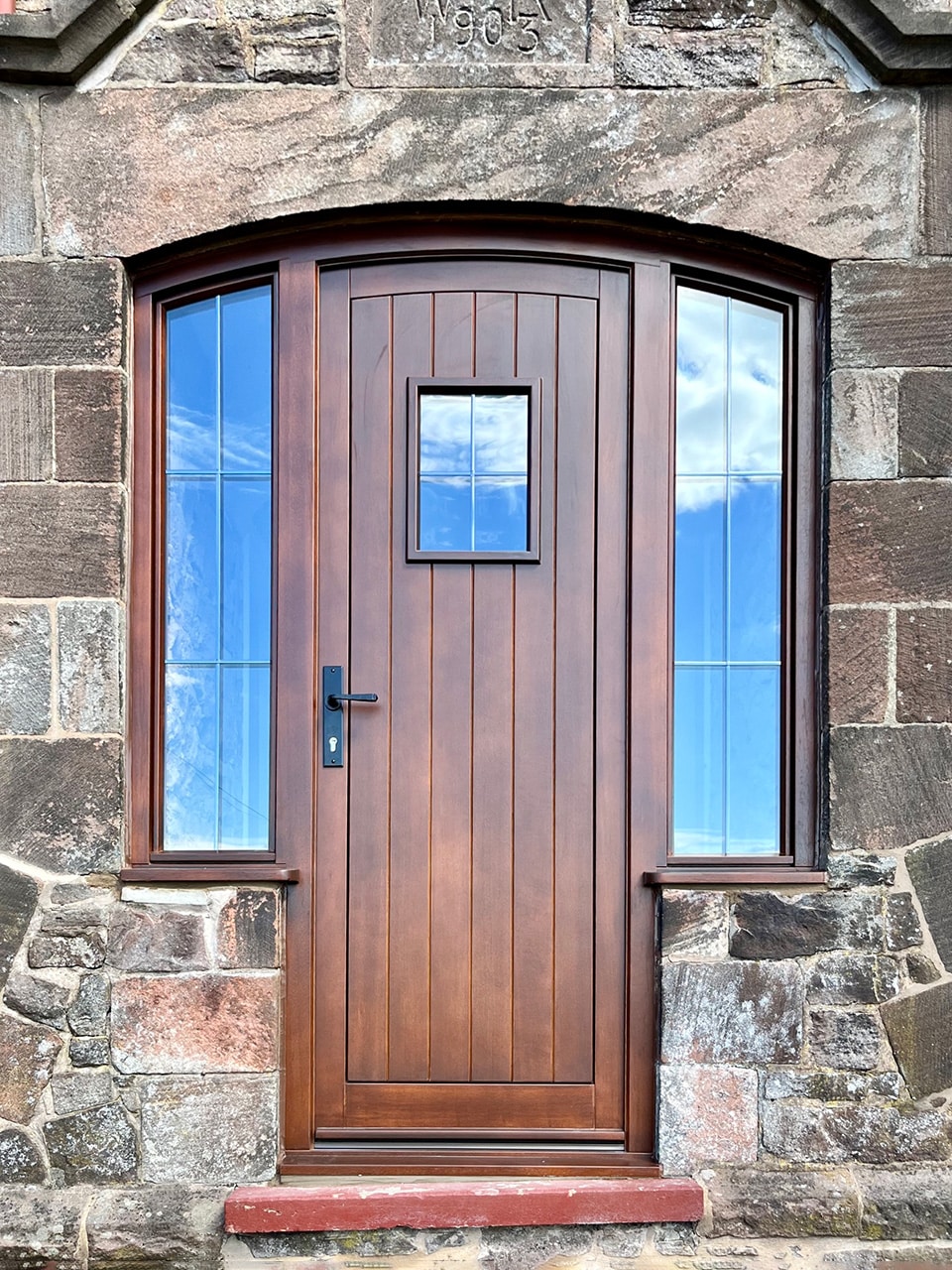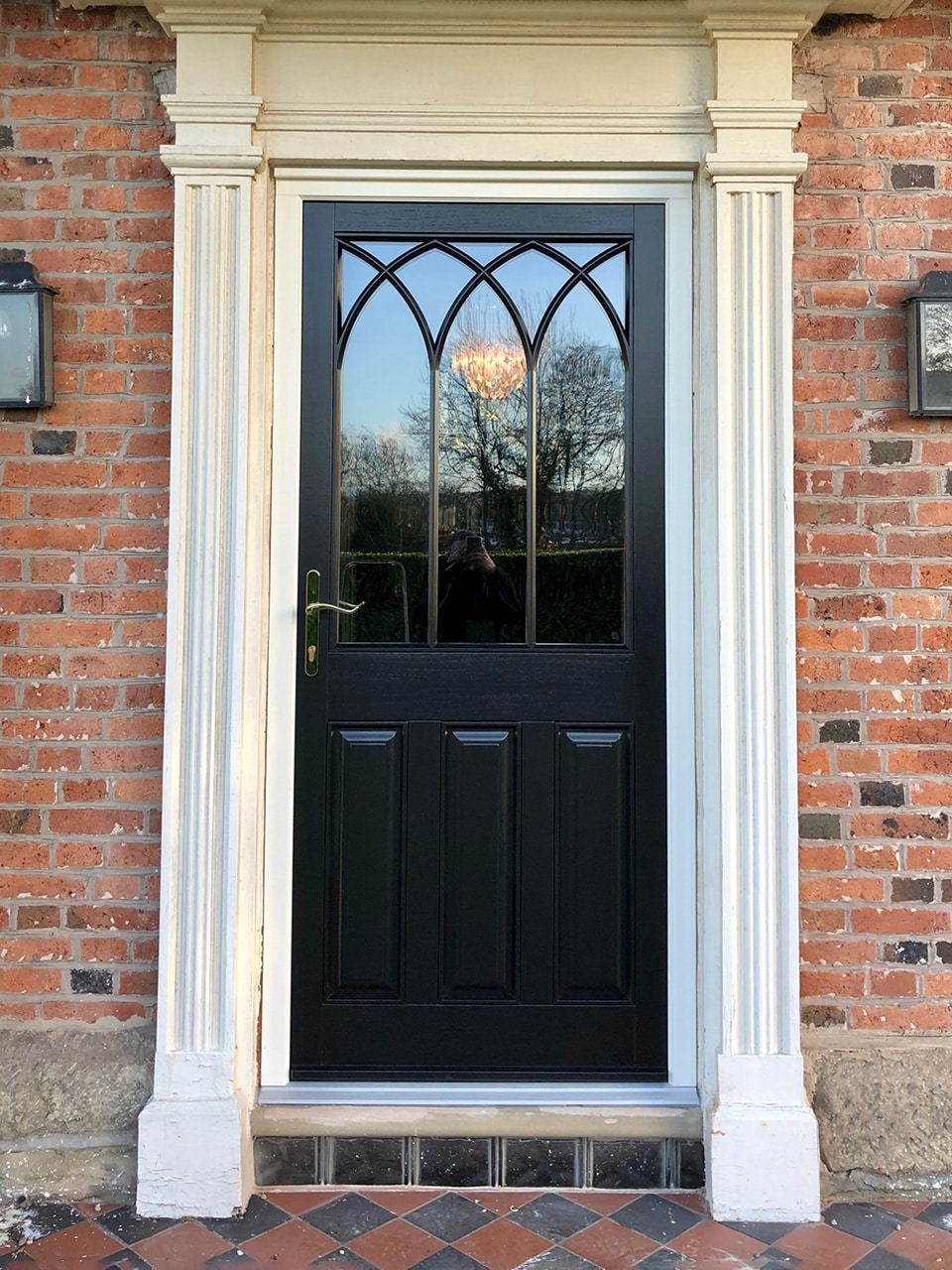The Timeless Elegance of Timber: A History of Wooden Doors Through the Ages
Throughout history timber doors have been central to architectural design, offering both functionality and style. From ancient civilisations to modern homes, wooden doors have evolved in response to changing tastes, technologies, and peoples’ needs. Today, luxury timber doors and windows stand as a testament to this rich history, combining timeless craftsmanship with contemporary innovation.
We thought we would take a journey through time, exploring the part to play timber doors have had in shaping architecture throughout history.
1. Ancient Egypt: The Dawn of Timber Doors
Wooden doors date back as far as 3000 BCE, with the ancient Egyptians among the first civilizations to incorporate them into their grand structures. Egypt’s abundant resources of cedar, sycamore, and acacia made timber a preferred material for doors, often used in temples, palaces, and tombs. The craftsmanship was meticulous, with doors featuring ornamental carvings, hieroglyphics, and intricate patterns.
Unlike the solid, reinforced doors of today, these early timber doors were often single planks of wood, bound together with metal hinges. They served as protective barriers as well as ceremonial grandeur.
2. Classical Greece and Rome: Function Meets Artistry
In ancient Greece and Rome, timber doors became an essential component of public and private buildings. Greek temples and Roman basilicas featured massive timber doors, often framed by stone and marble. The Greeks favoured olive and oak, while the Romans used cypress and pine for their lightness and durability.
By this time, doors had evolved into more complex structures. Double-panel doors and pivoting mechanisms were common, showcasing not only technical innovation but also artistic design. The Greeks, for instance, used decorated bronze fittings, while the Romans incorporated more elaborate detailing with carved figures and mythological scenes, reflecting the cultural significance of these structures.
3. Medieval Europe: Protection and Symbolism
As Europe entered the Middle Ages, timber doors became more robust, reflecting the need for security during turbulent times. Castles, cathedrals, and fortresses were often equipped with heavy wooden doors made from oak or elm, designed to withstand sieges and attacks. Reinforced with iron studs and bars, these doors conveyed power, protection, and resilience.
In religious architecture, such as cathedrals, timber doors were often symbolic. Gothic cathedrals featured towering wooden doors adorned with religious iconography, designed to inspire reverence and awe. The craftsmanship was extraordinary, with detailed carvings, arches, and flourishes, showcasing the importance of both function and spiritual grandeur.
4. Renaissance and Baroque: Opulence and Elegance
The Renaissance ushered in a period of artistic revival, and timber doors didn’t escape this. In both public and private buildings, doors became more refined and decorative, reflecting the period’s emphasis on balance, proportion, and classical beauty. Wealthy homes featured wooden doors with intricate panelling, carvings, and gilding, often made from mahogany, walnut, or ebony.
During the Baroque period, doors became even more lavish. The timber was often treated and painted in rich colours, and the design was ornate, with flowing curves and extravagant details. These doors were not merely functional; they were expressions of wealth and power, reflecting the opulence of the time.
5. The Georgian and Victorian Eras: Refined Craftsmanship
The Georgian era (18th century) saw a return to classical principles, with timber doors becoming more elegant and refined. The use of mahogany and oak was popular, and doors often featured symmetrical designs, raised panels, and fanlight windows above the door frames. These elements gave Georgian homes their distinctive sense of balance and grandeur.
The Victorian era (19th century) took timber door craftsmanship to new heights, influenced by the Industrial Revolution. Mass production techniques allowed for a greater variety of styles, but luxury homes still featured bespoke, handcrafted doors. Victorian doors were typically heavy, solid, and adorned with intricate details such as stained-glass inserts, brass knockers, and lavish carvings. Victorian architecture also introduced the concept of storm doors—secondary doors that provided additional weather protection and insulation, a precursor to today’s storm-proof timber windows.
6. 20th Century: Art Deco to Modern Minimalism
The 20th century witnessed dramatic shifts in architectural styles, from the decorative elegance of Art Deco to the stark simplicity of Modernism. In the Art Deco period, timber doors often featured geometric patterns, inlays, and bold colours, reflecting the exuberant spirit of the 1920s and 30s. Woods like ebony, walnut, and teak were popular for their rich hues and sleek appearance.
With the rise of Modernism in the mid-20th century, timber doors embraced a more minimalist aesthetic. Clean lines, flat panels, and subtle grain patterns became popular, with woods like birch and ash chosen for their light tones and simple elegance.
7. Today: The Perfect Blend of Tradition and Innovation
In today’s world, luxury timber doors and windows combine the best of tradition and modern innovation. Homeowners can choose from a wide variety of styles, from traditional panelled doors inspired by Georgian and Victorian designs to sleek, contemporary doors that embrace minimalist aesthetics. Sustainable sourcing of premium-grade woods ensures that modern timber doors are not only beautiful but also eco-friendly.
Technological advancements have also made timber doors more functional than ever before. High-performance double glazing, storm-proof designs, and enhanced insulation ensure that timber doors and windows are energy-efficient and weather-resistant. These doors, crafted with precision and care, serve as both a nod to history and a symbol of modern luxury.
















